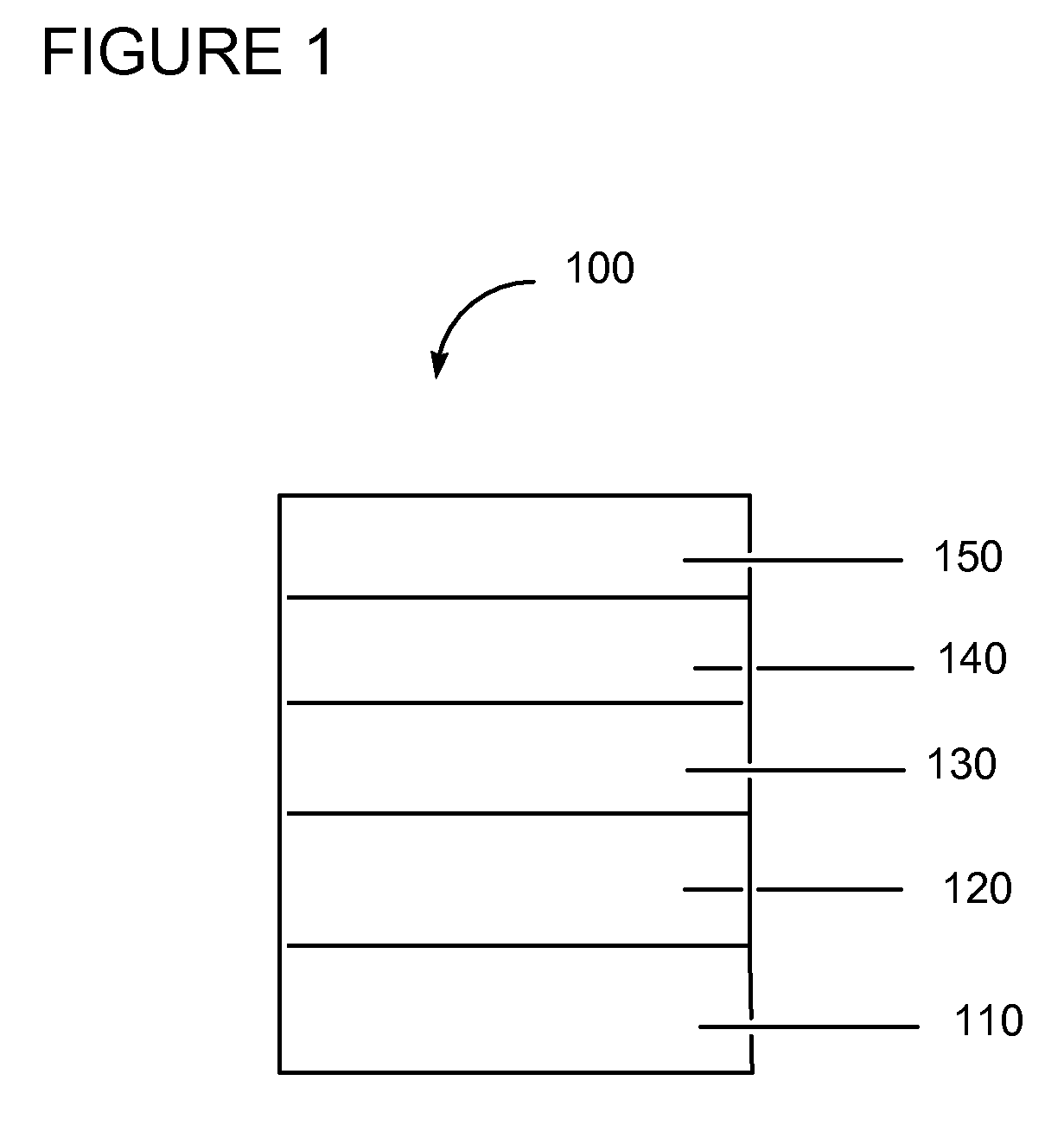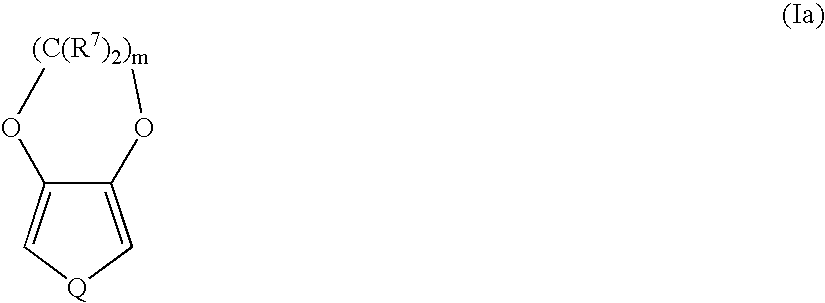Laser (230NM) ablatable compositions of electrically conducting polymers made with a perfluoropolymeric acid applications thereof
a technology of perfluoropolymer acid and composition, applied in the direction of non-metal conductors, conductors, synthetic resin layered products, etc., can solve the problem of difficult removal
- Summary
- Abstract
- Description
- Claims
- Application Information
AI Technical Summary
Problems solved by technology
Method used
Image
Examples
example 1a , 1b and 1c
Example 1A, 1B and 1C
[0146]This set of examples illustrates enhanced optical absorbance (@222 nanometer) of polypyrrole / poly(TFE-PSEPVE) with addition of poly(styrenesulfonic acid) sodium salt, PSSNa, or a mixture of PSSNa and Poly(styrenesulfonic acid), PSSA.
example 1a
Addition with PSSNA Only without Changing pH of the Aqueous PPy / Poly(TFE-PSEPVE) Dispersion and its Effect on Device Performance
[0147]The aqueous PPy / Poly(TFE-PSEPVE) dispersion made in Comparative Example 1 was used for addition with an aqueous solution of poly(styrenesulfonic acid) sodium salt, PSS−Na+. The dispersion contains 8.0% PPy / poly(TFE-PSEPVE) polymer and its pH is 4.1. The PSSNa solution used for the addition was prepared by adding 101.4 g water to 18.6 g PSSNa (Cat. #08772, PolySciences, Inc.) contained in a glass vial. Actual % was determined to be 14.1% after degassed. The aqueous PSSNa solution was transferred to an oxygen free box for mixing with the PPy / poly(TFE-PSEPVE).
[0148]55.0 g PPy / poly(TFE-PSEPVE) was slowly added with 3.773 g PSSNa solution in the oxygen free box. The weight of the two components was calculated to be 0.6 PSS− per one acid equivalent of poly(TFE-PSEPVE). The amount of PSSNa constitutes 0.6% (w / w) of the final dispersion, which was measured to...
example 1b
Addition with a Mixture of PSSNA and PSSA to Lower pH of the Aqueous PPy / Poly(TFE-PSEPVE) Dispersion and its Effect on Device Performance
[0150]In this example, the aqueous PPy / Poly(TFE-PSEPVE) dispersion made in Comparative Example 1 was added with a mixture of PSSNa and PSSA in the oxygen free box. The PSSNa solution made in Example 1 was used. A PSSA solution was prepared by diluting 14.98 g PSSA solution (˜30% w / w in water, Cat. #08770, PolySciences, Inc.) with 15.00 g deionized water in a glass vial. Actual % was determined to be 15.15% after degassed. The aqueous PSSA solution was also transferred to the oxygen free box for mixing with the PPy / poly(TFE-PSEPVE).
[0151]69.996 g PPy / poly(TFE-PSEPVE) was slowly added with 0.183 g PSSA solution followed with 4.581 g PSSNa solution in the oxygen free box. The weight of the three components was calculated to be 0.6 PSS− per one acid equivalent of poly(TFE-PSEPVE). The amount of PSSNa / PSSA constitutes 0.6% (w / w) of the final dispersion,...
PUM
| Property | Measurement | Unit |
|---|---|---|
| Fraction | aaaaa | aaaaa |
| Fraction | aaaaa | aaaaa |
| Fraction | aaaaa | aaaaa |
Abstract
Description
Claims
Application Information
 Login to View More
Login to View More - R&D Engineer
- R&D Manager
- IP Professional
- Industry Leading Data Capabilities
- Powerful AI technology
- Patent DNA Extraction
Browse by: Latest US Patents, China's latest patents, Technical Efficacy Thesaurus, Application Domain, Technology Topic, Popular Technical Reports.
© 2024 PatSnap. All rights reserved.Legal|Privacy policy|Modern Slavery Act Transparency Statement|Sitemap|About US| Contact US: help@patsnap.com










